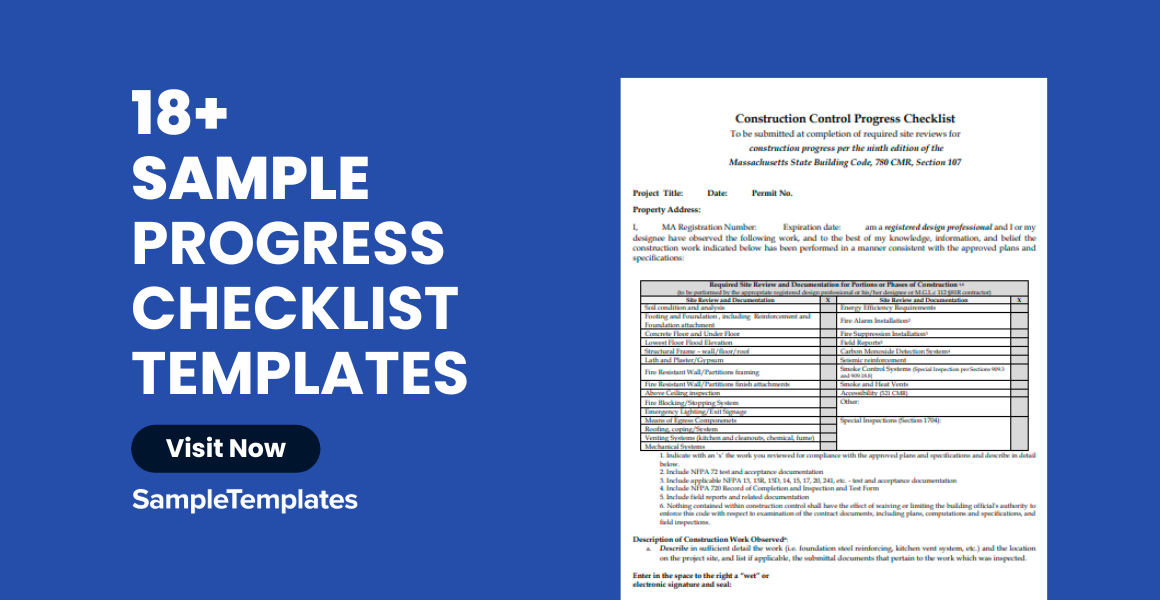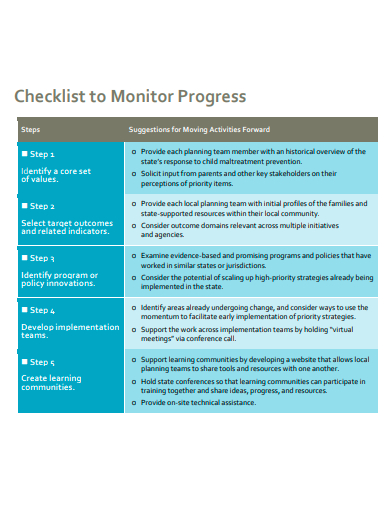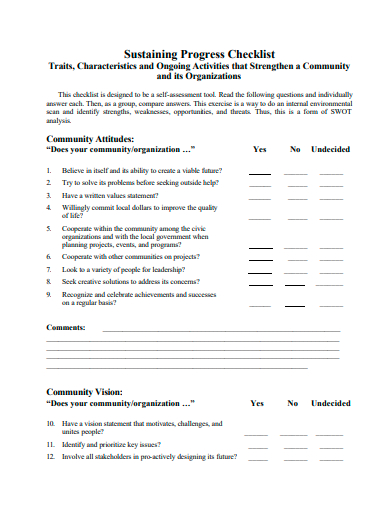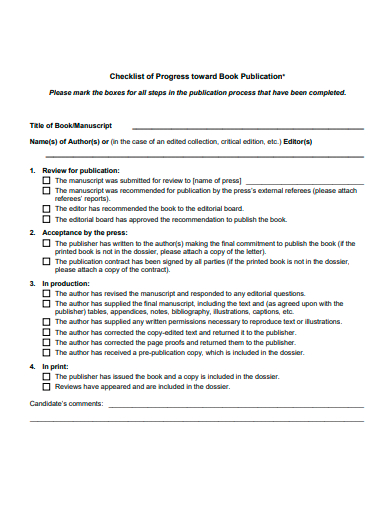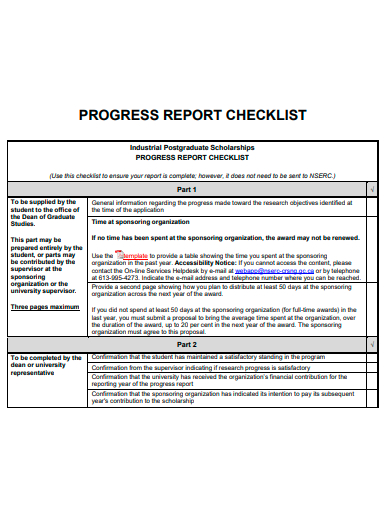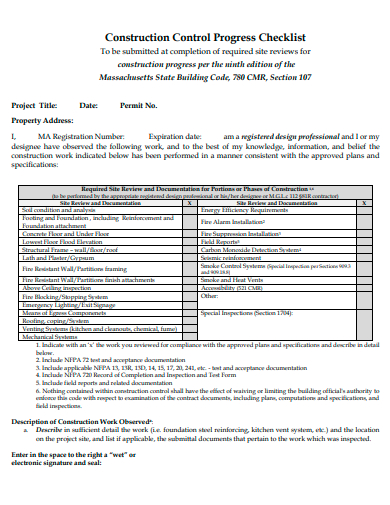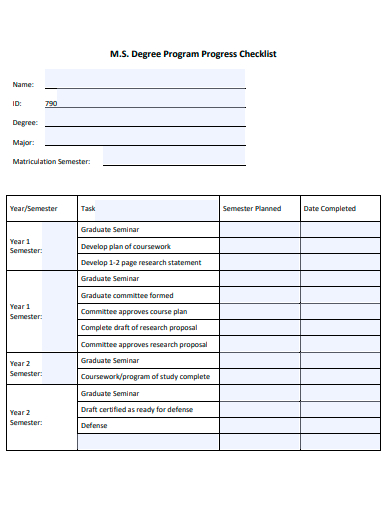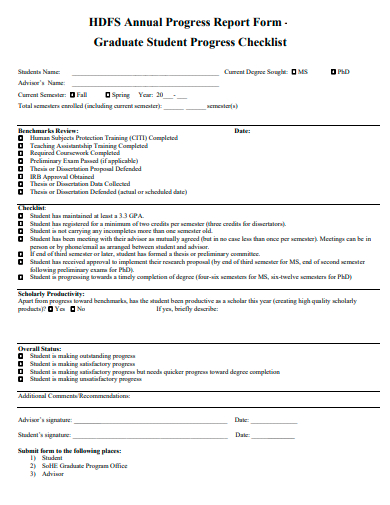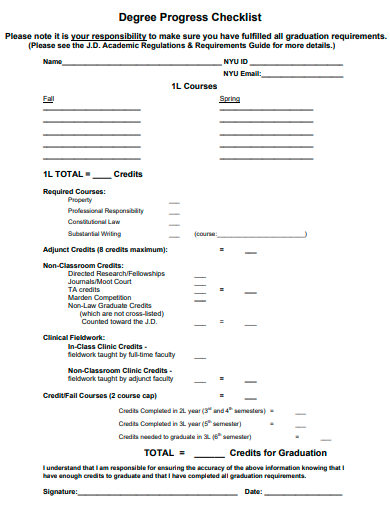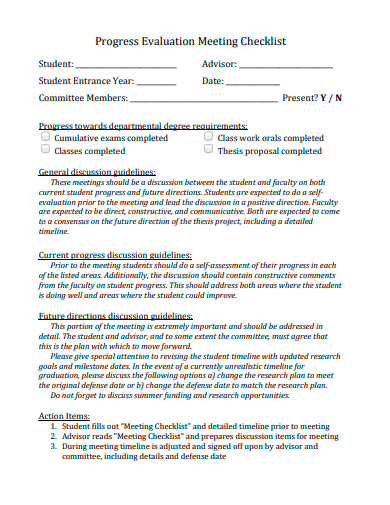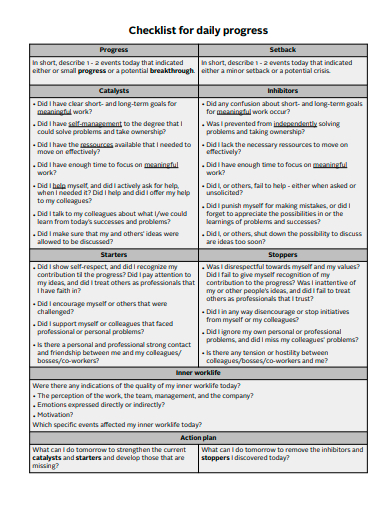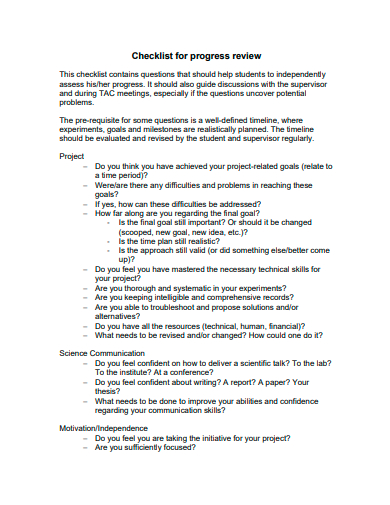In today’s fast-paced world, efficiently tracking one’s milestones is paramount. A ‘Progress Checklist’ is an invaluable tool designed to guide individuals and businesses in keeping track of their achievements and tasks. It’s more than just a list; it’s a strategic roadmap, ensuring that every step taken is purposeful and directed towards set goals. Whether you’re a professional, a student, or embarking on a personal project, this checklist is your printable ticket to streamlined success.
18+ Progress Checklist Samples
1. Sample Student Progress Monitoring Checklist Template
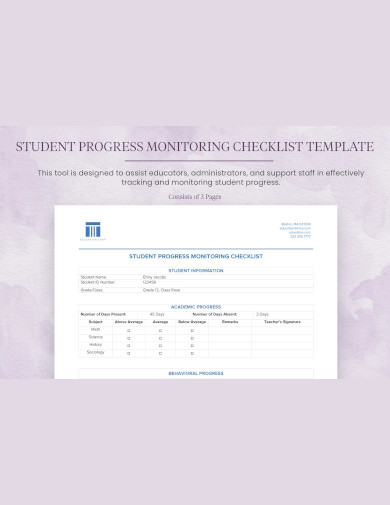
2. Sample Progress Tracking HR and Onboarding Checklist
3. Printable Checklist Template
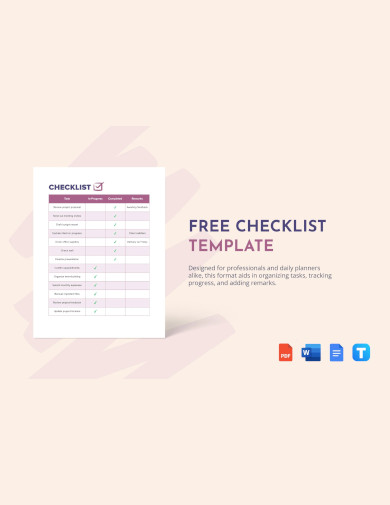
4. Basic Checklist Template
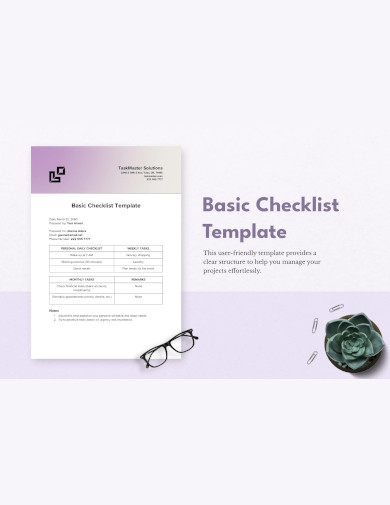
5. Sample Checklist Template

What is a Progress Checklist?
A progress checklist is an essential tool used to track and manage the completion of various tasks or sample objectives within a project or goal. By offering a clear structure and tangible markers of what has been achieved and what remains, it serves as a roadmap to successful project completion.
Definition and Core Concept
A progress checklist is a sample list that breaks down a larger task or project into smaller, more manageable components. Each item on the checklist represents a specific task or step that needs to be completed. As each task is achieved, it is marked or checked off, indicating progress towards the overarching goal. You can also see more templates like Activity Checklist Samples.
The Essence of a Progress Checklist
At its core, a progress checklist is more than just a list of tasks; it embodies the sequence and priority of those tasks. This sequential representation not only provides clarity but also instills a sense of achievement as items are ticked off. It serves as a tangible representation of progress and gives a bird’s eye view of what’s left to be accomplished.
Components of Progress Checklist
A progress checklist typically contains:
- Tasks or Milestones: These are the primary components, broken down into manageable steps or sequences. They represent the vital actions required to reach the goal.
- Status Indicators: These can range from simple tick boxes to more detailed descriptors like “In Progress,” “Completed,” or “Pending.”
- Prioritization: Some checklists may categorize tasks based on urgency or importance, ensuring that high-priority items are addressed first.
Benefits of Using a Progress Checklist
- Organization and Structure: One of the primary advantages of a progress checklist is that it imparts structure to an otherwise chaotic process. Especially for larger projects, having a clear roadmap of what needs to be done can be invaluable.
- Motivation and Productivity: Ticking off tasks can be deeply satisfying. Each tick acts as a small reward and encourages the individual or team to move on to the next task with renewed vigor.
- Error Reduction: By having a structured approach, the chances of overlooking critical tasks or steps are significantly reduced. This ensures that the project or task is more thoroughly and accurately completed.
- Accountability: In team settings, a progress checklist assigns responsibility. Team members can easily identify their responsibilities and the tasks they’re accountable for.
- Efficient Time Management: With a clear visualization of tasks and milestones, individuals and teams can allocate time more effectively, ensuring that deadlines are met.
Implementing a Progress Checklist
To effectively implement a progress checklist:
- Start by defining the ultimate goal or objective.
- Break down the main goal into smaller tasks or milestones.
- Prioritize these tasks based on their importance or sequence.
- Regularly review and update the printable checklist to reflect changes or new insights.
- Make use of digital tools or apps that can assist in creating and managing progress checklists.
Applications of a Progress Checklist
- Project Management: Project managers use checklists to track tasks, ensuring that projects stay on course and deadlines are met.
- Education: Teachers and students use checklists to monitor the completion of assignments, projects, or study topics.
- Daily Life: From grocery shopping to planning events, checklists help individuals stay organized in their personal lives.
Usage Scenarios
- Project Management: Track the phases and tasks of a project.
- Learning and Education: Monitor progress in a course or study regimen.
- Personal Goals: Break down personal objectives like fitness goals, reading lists, or travel plans.
6. Sample Monitor Progress Checklist Template
7. Sample Sustaining Progress Checklist Template
8. Sample Progress Checklist Template
9. Sample Progress Report Checklist Template
10. Sample Construction Control Progress Checklist Template
11. Sample Degree Program Progress Checklist Template
12. Sample Programming Progress Checklist Template
13. Sample MS Student Progress Checklist Template
14. Sample Annual Progress Report Form Template
15. Sample Degree Progress Checklist Template
16. Sample Progress Evaluation Meeting Checklist Template
17. Sample Progress Note Checklist Template
18. Sample Daily Progress Checklist Template
19. Sample Progress Review Checklist Template
How do you Create a Progress Checklist?
In our fast-paced world, staying on top of tasks and projects can often feel overwhelming. This is where a progress checklist comes in handy. Unlike a traditional to-do list, a progress checklist focuses not only on what needs to be done but also on tracking your accomplishments, ensuring you stay motivated and informed about your advancements. Here’s a guide on how to create an effective progress checklist in just a few steps.
Step 1: Clearly Define Your Goals
Start by articulating what you hope to accomplish. Be specific with your goals. Instead of a vague target like “get fit”, opt for something more concrete like “run a 10k in under 50 minutes”. By having clear, measurable goals, you set a foundation for your checklist and have a clear endpoint to work towards.
Step 2: Break Goals into Sub-Tasks
Once you have a clear goal, dissect it into smaller tasks or milestones. If your goal is to run a 10k, your sub-tasks might include: researching a training plan, buying appropriate running shoes, running short distances consistently, then gradually increasing your mileage. Each sub-task represents a step toward your larger goal, making it more achievable.
Step 3: Incorporate Progress Indicators
This is what sets a progress checklist apart from a regular one. For each sub-task, incorporate indicators that allow you to measure your progress. Using the running example, next to the sub-task “running short distances consistently”, you might add indicators like “ran 3k without stopping” or “achieved a 5k run in 30 minutes”. These indicators serve as mini-achievements, motivating you to push forward.
Step 4: Set Realistic Deadlines
While it’s essential to challenge yourself, it’s equally important to be realistic. Assign a feasible deadline to each sub-task, ensuring you have adequate time to complete it without feeling rushed. Remember, the goal is steady progress, not a hasty completion. For our running goal, setting a deadline for achieving a 5k run might be after four weeks of consistent training.
Step 5: Regularly Update and Reflect
As you work through your checklist, take time to update your progress indicators and reflect on your achievements. Celebrate the small victories, and if you hit a snag or a delay, adjust your checklist accordingly. This step ensures that your checklist remains a living design document, adapting to your real-time progress and challenges.
What is a Progress Monitoring Checklist?
A progress monitoring checklist is a specialized tool used to assess, track, and document the ongoing performance and advancement of specific tasks or objectives. Unlike a simple progress checklist, which might be used to track the completion of tasks, a progress monitoring checklist focuses on measuring the quality, efficiency, and effectiveness of the progress made. It is commonly utilized in educational settings to track students’ development, but it’s also relevant in business, healthcare, and various projects where consistent monitoring is essential.
In Conclusion, a progress checklist is an indispensable tool for anyone looking to achieve their goals in a structured and organized manner. Whether it’s for personal projects, team assignments, or professional endeavors, a well-crafted progress checklist can make the journey smoother and more efficient. By offering a clear roadmap, reducing errors, and boosting motivation, it ensures that individuals and teams remain focused on the end goal, making success more attainable. You can also see more templates like Monitoring Checklist Samples.
Related Posts
FREE 18+ Complaint Checklist Samples in MS Word | Google Sheets | PDF
FREE 18+ Internship Checklist Samples in MS Word | Google Docs | PDF
FREE 18+ Statement Checklist Samples in MS Word | Google Sheets | PDF
FREE 20+ Voluntary Checklist Samples in MS Word | Google Sheets | PDF
FREE 18+ Summary Checklist Samples in MS Word | Google Sheets | PDF
FREE 14+ Sponsorship Checklist Samples in MS Word | MS Excel | PDF
FREE 18+ Conference Checklist Samples in MS Word | Google Sheets | PDF
FREE 17+ Lesson Checklist Samples in MS Word | Google Sheets | PDF
FREE 18+ Enrollment Checklist Samples in MS Word | Google Docs | PDF
FREE 18+ Graduation Checklist Samples in MS Word | Google Sheets | PDF
FREE 15+ Consent Checklist Samples in MS Word | Google Sheets | PDF
FREE 18+ Review Checklist Samples in MS Word | Apple Pages | PDF
FREE 18+ Submission Checklist Samples in MS Word | Google Docs | PDF
FREE 18+ Request Checklist Samples in MS Word | MS Excel | PDF
FREE 21+ Faculty Checklist Samples in MS Word | Google Sheets | PDF
